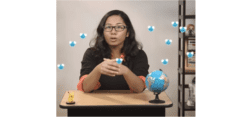Have you ever thought about all the different kinds of groups you’re a part of?
Like, there’s the friends you hang out with and your family, your hockey team, your Crash Course fan club, and that’s just for starters! And even though these groups are totally different, in each of them there’s something that all its members have in common. We’ve learned that all objects—that is, all things made of /matter/— have properties, qualities that make them different from one another.
Like, the metal water bottle we had in our lunch bag was a good conductor of heat, and the fruit strip was more malleable than the potato chip. Just like groups of people have major things in common, so do different materials. So how does that work? How can we group materials by their properties?
///Standards Used in This Video/// 5-PS1-3. Make observations and measurements to identify materials based on their properties. [Clarification Statement: Examples of materials to be identified could include baking soda and other powders, metals, minerals, and liquids. Examples of properties could include color, hardness, reflectivity, electrical conductivity, thermal conductivity, response to magnetic forces, and solubility; density is not intended as an identifiable property.] [Assessment Boundary: Assessment does not include density or distinguishing mass and weight.]




